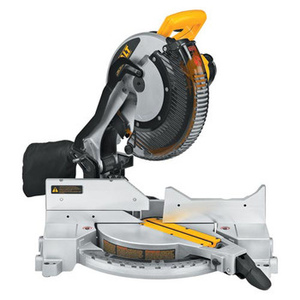
An Introduction to the world of Miter Saws
Ever since the main slash saw has come into the existence, miter saws have time and again developed further, increasingly famous and unimaginably progressively valuable. Ideally, where exactness crosscuts and precise miters are worried, there is hardly a superior apparatus when compared to a miter saw. Enabling clients to work faster and with accuracy, to perform compound miter cuts, slope slices and working with higher material bits, the versatile and the best sliding compound miter saw is an apparatus that none can challenge.
- Compound Miter Saws
On a compound miter saw, the cutting edge moves in three general ways. To start with, the cutting edge climbs and down in a hacking movement. Second, the sharp edge moves around 45-degrees to one side and directly for miter cuts, and in conclusion, the cutting edge will lean either to one side or to one side and directly to perform incline and twofold angle cuts.
Although compound miter saws are commonly more compact and more affordable than sliding compound miter saws, they additionally have less limit with regards to more extensive sheets. Regularly, a compound miter saw will be not able through-cut a wide board with a solitary pass.
- Sliding Compound Miter Saws
A sliding compound miter saw does everything a compound miter saw does while additionally adding a couple of more things to the pot. First of all, a sliding compound miter saw is planned with two rail-like cylinders that enable the sharp edge to move forward and backward in a bigger scope of movement. This develops crosscutting limit by a couple of inches and enables clients to through-cut more extensive sheets (for the most part with one simple pass).
As a result of these cylinders, however, sliding compound miters saws are ordinarily heavier, they are less versatile and they’re increasingly costly. Except for some Bosch and Makita saws that use a sort of articulating arm in lieu of sliding-tubes, sliding compound miters additionally require more space (particularly at the back of the saw) to work appropriately.

Slant: Bevel controls allow clients to amend the point of the cutting edge to make calculated cuts along the board thickness. This is inconceivable convenient and particularly accommodating when cutting embellishment. Miter saws are easy to get to with one incline (sharp edge single slope tilts to one side) and two slants (twofold or double slant, cutting edge tilts to right and one side).
So as to make a slant cut the other way, single incline saws necessitate that stock be flipped end for end (which can be a torment). Twofold slant saws, on the opposite end, offer straightforward inclines to both the left and right. While twofold slant miter saws are increasingly costly, the cost contrast (about $50 – $100) is practically irrelevant in the event that you utilize the element.
Except for Bosch miter saws whose slope controls are helpfully direct, most saws’ incline controls are put at the back of the saw. While this is run of the mill and that’s only the tip of the iceberg or-less deliberate, it has demonstrated less ergonomic than direct front access.
